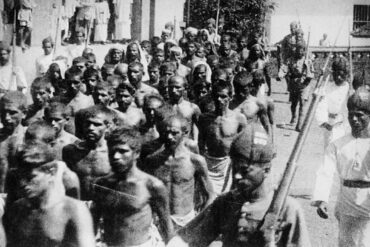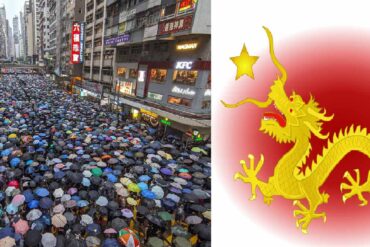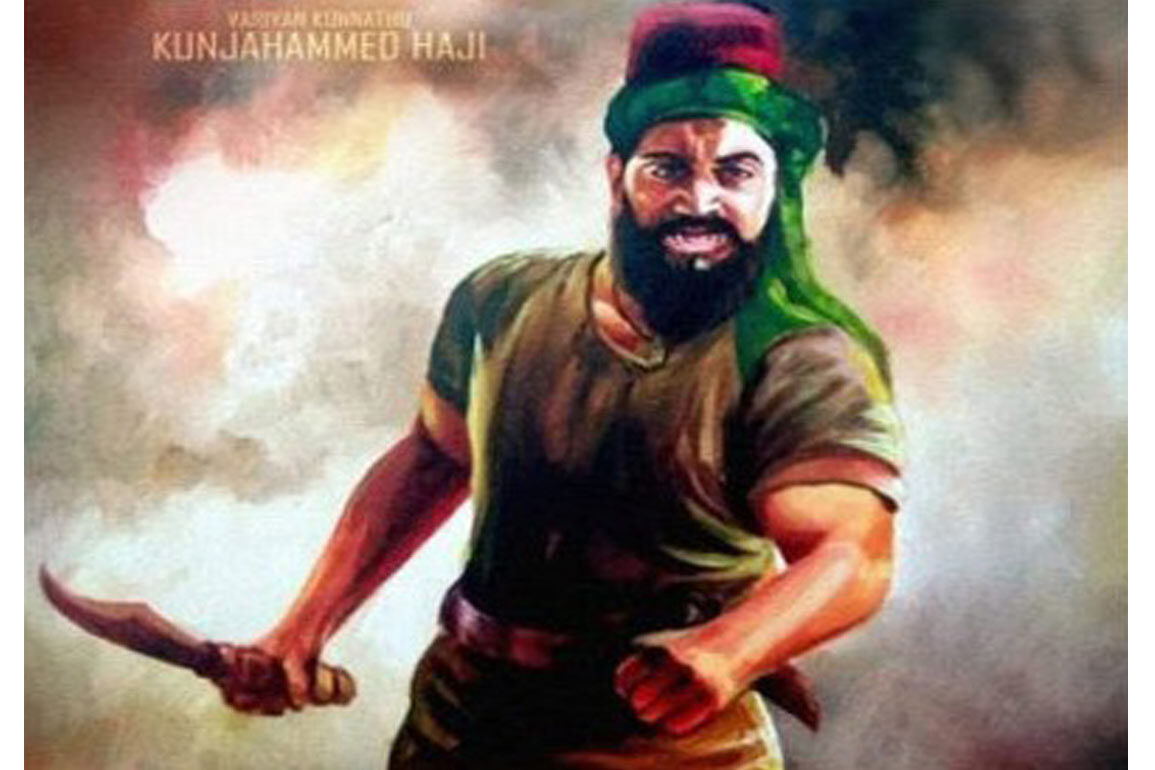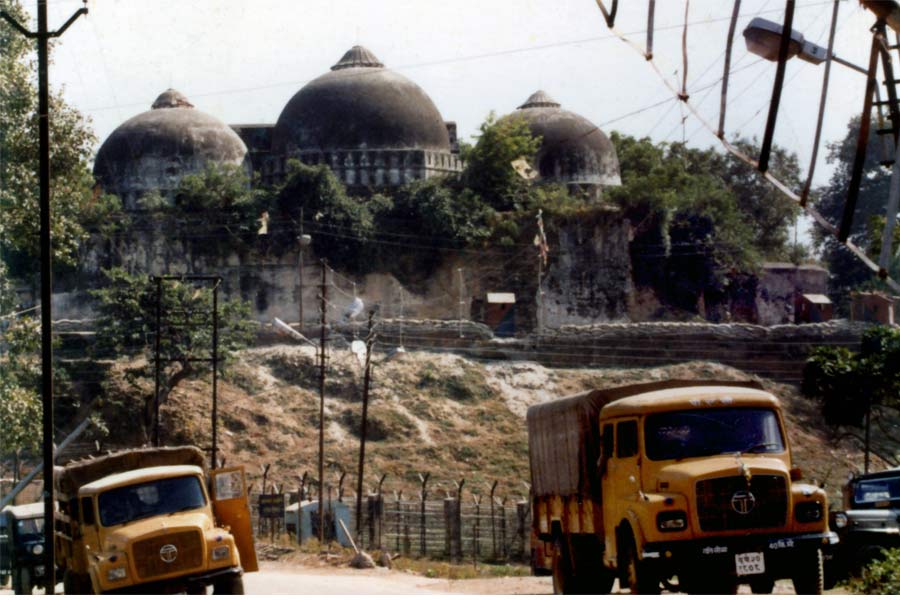Variyam Kunnath Kunhammad Haji, described in the British records as the most dangerous rebel leader during the 1921 rebellion, was shot dead by the British forces after a summary trial at the Malabar Special Police camp at Kottakkunnu in Malappuram on a cold morning in January 1922 for his leading role in the series of violent incidents that shook the colonial rule in Malabar for many months, which saw thousands of rebels and scores of British troops losing their lives.
Legend has it that Haji, when asked about his last wish by Colonel Humphrey, the officer who presided over the trial, demanded that he be shot from the front so that he could fall face down embracing his motherland for whose freedom he had fought. But despite the passing of almost a century and dozens of scholars making extensive studies on the violent incidents of 1921, Kunhammad Haji remains a mysterious figure, reviled as a violent fanatic by detractors and a heroic freedom fighter by his admirers. These divergent perspectives on the life and career of the Haji permeates to the scholarly world, as opinions were divided on his activities and motives right from the days of the revolt, a tendency that still continues in academic as well as popular accounts.
One of the early descriptions of Kunhammad Haji, made by C Gopalan Nair, a retired deputy collector in the Malabar district administration, soon after his death is as follows: “On the outbreak of the rebellion he became king, celebrated his accession by the murder of Khan Bahadur Chekkutty, a Moplah retired police inspector…He styled himself Rajah of the Hindus, Amir of the Mohammedans and Colonel of the Khilafat Army. He wore a fez cap, wore the Khilafat uniform and badge and had a sword in his hand. He enjoyed absolute Swaraj in his kingdom of Ernad and Valluvanad: He announced that he was aware that the inhabitants have suffered greatly from robbing and looting, that he would impose no taxation on them this year (1921) save in the way of donations to the Ayudha Fund and that next year the taxes must be forthmong. He ordered numbers of agricultural labourers to reap and bring the paddy raised on the Tirumulpad’s [a Hindu landlord in the area] lands, the harvesters being paid in cash and the grains set apart to feed the Haji’s forces. He issued passports to persons wishing to go outside his kingdom and the cost of the pass was a negligible figure, according to the capacity of the individual concerned.”
Gopalan Nair, in his book, The Moplah Rebellion 1921, published by the Norman Printing Bureau in Calicut in 1923, was giving a first-hand account of Kunhammad Haji’s famous inaugural speech at Anakkayam, on the night of 22nd August 1921, after invading the house of prominent British supporter Khan Bahadur Chekkutty, beheaded him and then marched with lighted torches with the severed head displayed on a spear. The moment marked the rise of Kunhammad Haji as the most prominent rebel leader in the region that came under their control, a geographical area that comprises two major British taluks of Ernad and Valluvanad, and parts of Kozhikode (now falling into the four districts of Kozhikode, Wayanad, Malappuram, and Palakkad), where resided mostly the Muslim peasants interspersed with their Hindus neighbours, whose population at the time was around 40,000 only. Haji pledged to protect them with his might, and from the very beginning of his reign, he had declared that anyone who invaded Hindu homes and made forcible conversions to Islam would be dealt with mercilessly. At the same time, he said, anyone who cooperated with the British would definitely face his wrath.
When the outbreak began with clashes at Tirurangadi and some other places on August 21, Kunhammad Haji was not known outside his immediate surroundings in Ernad and Valluvanad where he had been active as a Khilafat worker. Most nationalist leaders who interacted with the rebels in the early days of the rebellion made little mention of him in their contemporary memoirs.
But it appears the British administration, based in Calicut, had a better understanding of his activities because his name figured in order from District Magistrate, Calicut, in February 1921, banning a few Congress-Khilafat leaders from making public speeches in the Ernad-Valluvanad taluks as tensions began to rise between the Khilafat workers and the police. His only other public appearance prior to the outbreak was at Calicut beach, in August 1920, when Gandhi and Maulana Shoukat Ali had addressed a huge gathering during their tour prior to the launch of the Non-Cooperation movement.
But Kunhammad Haji was deeply influenced by the anti-British revolts in Malabar, as he came from a family that had fought the foreign rulers and their henchmen, the janmis in Ernad, for many decades. Many family members had lost their lives to bullets or the hangman’s noose. His own father, Chakkipparamabth Variankunnath Moideenkuty Haji, of Nellikkuth village, was transported to Andamans for life where he died in 1907. Kunhammad was born to Moideenkutty Haji and his wife Kunhaisumma in 1866 at Nellikkuth and he received his religious education from Mammad Kutty Musaliyar, brother of Khilafat supreme leader Ali Musaliyar, whose families were close neighbours in the village.
Kunhammad Haji started his life as a buffalo-cart driver, bringing agricultural and hill produces from the interior Ernad villages to the market in Calicut, and on those long journeys his favourtie pastime was to sing the Badr padappattu and the Malappuram padappattu, war songs composed in the Mappilappattu style that were very popular in the Mappila villages. These songs, which eulogised the great wars in the Islamic history and the great deeds of local heroes in battles against foreign rulers, along with the regular nerchas to those slain heroes, kept the martial traditions alive among the youngsters. He grew up in this valorous tradition and his father and mother both belonged to families with such heroic stories to recount.
There is very little information on the early life of Kunhammad Haji, except that he had made a visit to Mecca some time in 1909 under some mysterious circumstances. This trip does not seem to have been part of the normal Hajj pilgrimage, because it took place immediately after his name cropped up in two incidents of highway robbery in Manjeri in 1908 and 1909. The first incident was the robbery of a mail wagon, which carried official letters and valuables between colonial outposts. According to official reports, this was a well-executed crime, using only sticks and no weapons, but no valuables were lost.
The next year, two muthans, a community of goldsmiths from Palghat, who travelled between local markets with their valuable wares in gold and silver, were waylaid and robbed. Here again, only sticks were used but in the skirmish both the goldsmiths were killed and their properties looted. The involvement of Kunhammad Haji came to be known following the arrest of an ex-sepoy in the case, and soon after he left the village, to return in 1914, the year the war broke out.
According to some other versions, Kunhammad Haji was known to the officials as preparing for a battle of jehad against the British “obtaining fatwas from religious leaders.” There were moves to arrest him, but he escaped and on reaching Bombay, took a merchant ship to Mecca. This unofficial version seems to be credible because in 1915, in a note on a possible outbreak in the area, District Magistrate C A Innes comments that “Variankunanth Kunhamad Haji, whether deservedly or not, has the reputation of being the most dangerous man in Malabar.” It would appear that these two incidents of robbery were not for profit, but to raise funds for the impending insurrection.
Six years later, Kunhammad Haji proved the officials were right in their assessment, though the nationalist leaders in Calicut had no knowledge about his activities or the warlike preparations they were making in the interior villages at the time the Khilafat movement was launched. It was not that Gandhi and Shoukat Ali, who were in Calicut a year ahead of the outbreak, were not warned about the Mappila traditions and their understanding of Swaraj, which they interpreted in their own terms of Jihad. M P Narayana Menon and Kattilasssery Muhammed Musaliyar, president and secretary of the Ernad Taluk Khilafat Committee, had apprised them about the possibility of the movement slipping into violence in Malabar villages. But their apprehensions were not heeded and the movement was duly launched with disastrous consequences in these parts. Many leaders, including Yaqub Hassan of Madras, later said the nationalist leadership simply abandoned the Mappilas to their fate in their hour of peril and difficulties in the post-rebellion phase.
Once the rebellion broke out and martial law was declared, it turned out to be a violent match of blood and bullets. As the frontline leaders like Ali Musaliyar surrendered following advice from Congress leaders like K P Kesava Menon and K Madhavan Nair at Tirurangadi, the rebel Mappilas moved to the interiors and guerilla warfare broke out. Many military and police outposts were attacked, pro-British landlords and individuals like Khan Bahadur Chekkutty were murdered, and a large number of Namboodiri illams and Nair tharavadus were occupied by the rebels.
There was no united leadership and the insurgence was led by as many as 21 rebel leaders who took charge of parts of Ernad and Valluvanad when the fighting started between rebel forces and the British regiments like the Dorset and Gurkhas, trained in battles in difficult terrain like hills and forests. It was during this period the unfortunate incidents of forced conversions took place, and according to historians like Dr M Gangadharan and Dr K N Panikkar, such incidents did take place in various places though this did not appear to be the dominant aspect of the rebellion at any point in its bloody history.
In fact, Variyan Kunnath Kunhamamd Haji seems to have made early efforts to take control of the rebel groups and bring some order in their ranks and activities. He issued firm orders against forcible conversions and undue harassment of non-Muslims, and during his meeting with Congress leader K Madhavan Nair, at Manjeri on August 24, he said he would cut off the right hand of those who were found to loot the Hindu homes. The meeting had taken place at the rebel leader’s own initiative and he even sought the Congress leader’s advice as to how to proceed. Madhavan Nair told him to back off from the violent course and surrender to the authorities, which he said was impossible to do.
In those six months of his reign, there were several instances when the Haji made efforts to ensure equal justice to all communities. For example, when a band of Mappilas raided the Namboodiri Bank at Manjeri and looted it, the Haji’s followers stood guard to it and ensured that all the looted properties were returned to their rightful owners. On another occasion, when he encountered a number of Hindu lower caste people gathered for conversion to Islam, he asked them to go home and return later. However, he was ruthless with regard to those he suspected to have helped British troops. In one instance, during September, when the Gurkha and Dorset regiments were making raids in villages in search of rebels, he rounded up around 30 people in Tuvur village and, after a show trial, executed all and their bodies were thrown into a well.
But the rebels were being overtaken by the brute force of the British army. All the villages were surrounded, door-to-door searches conducted, and rebel supporters ruthlessly dealt with. Haji’s band of armed supporters, around 200 in August, had been dwindling in number and they fell back to the deep forest regions around Nilambur on the Western Ghats. There were several encounters during those last months of the rebellion and one of the most spectacular was at Pandalur, in the Nilgiris.
On January 4, a detachment of the newly-formed Malabar Special Police traced Haji and his followers to their hideout at Veettikundu in Chokad Hills, off the Nilambur-Kalikavu road, with the help of some ex-members of his gang. After two days, Haji and 20 of his followers surrendered, with 15 guns, some swords, and ammunition. They were marched on foot 13 miles to Wandoor, then to Manjeri and from there they were taken to the Sub-Divisional Magistrate Court at Malappuram, for trial under Martial Law. It was a summary trial and his execution took place on the morning of 20th or 21st of January 1922 (the dates vary in different sources) bringing an end to the life of this heroic fighter and launching a new era of converting him into a cult figure in the decades since his departure.







